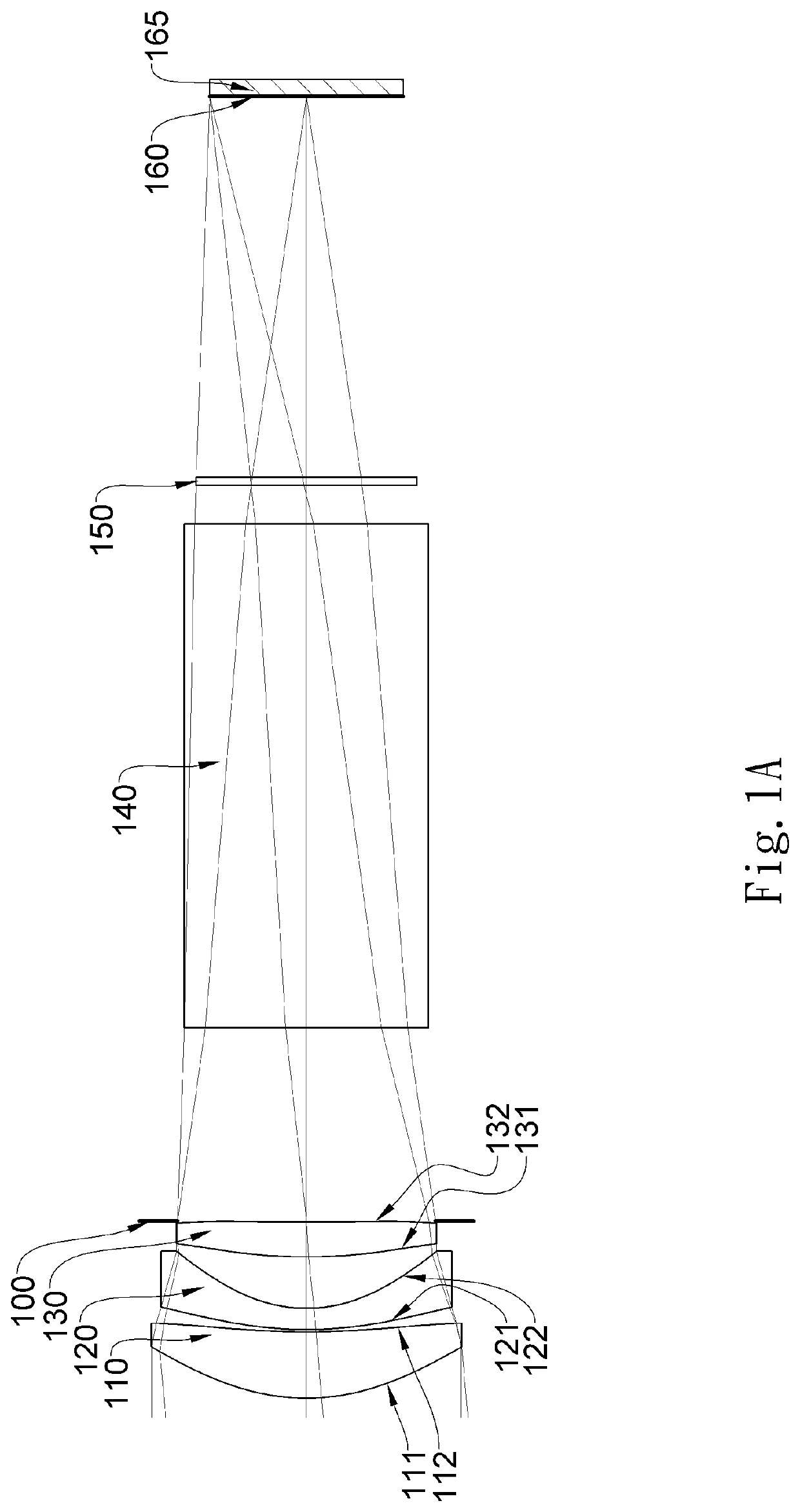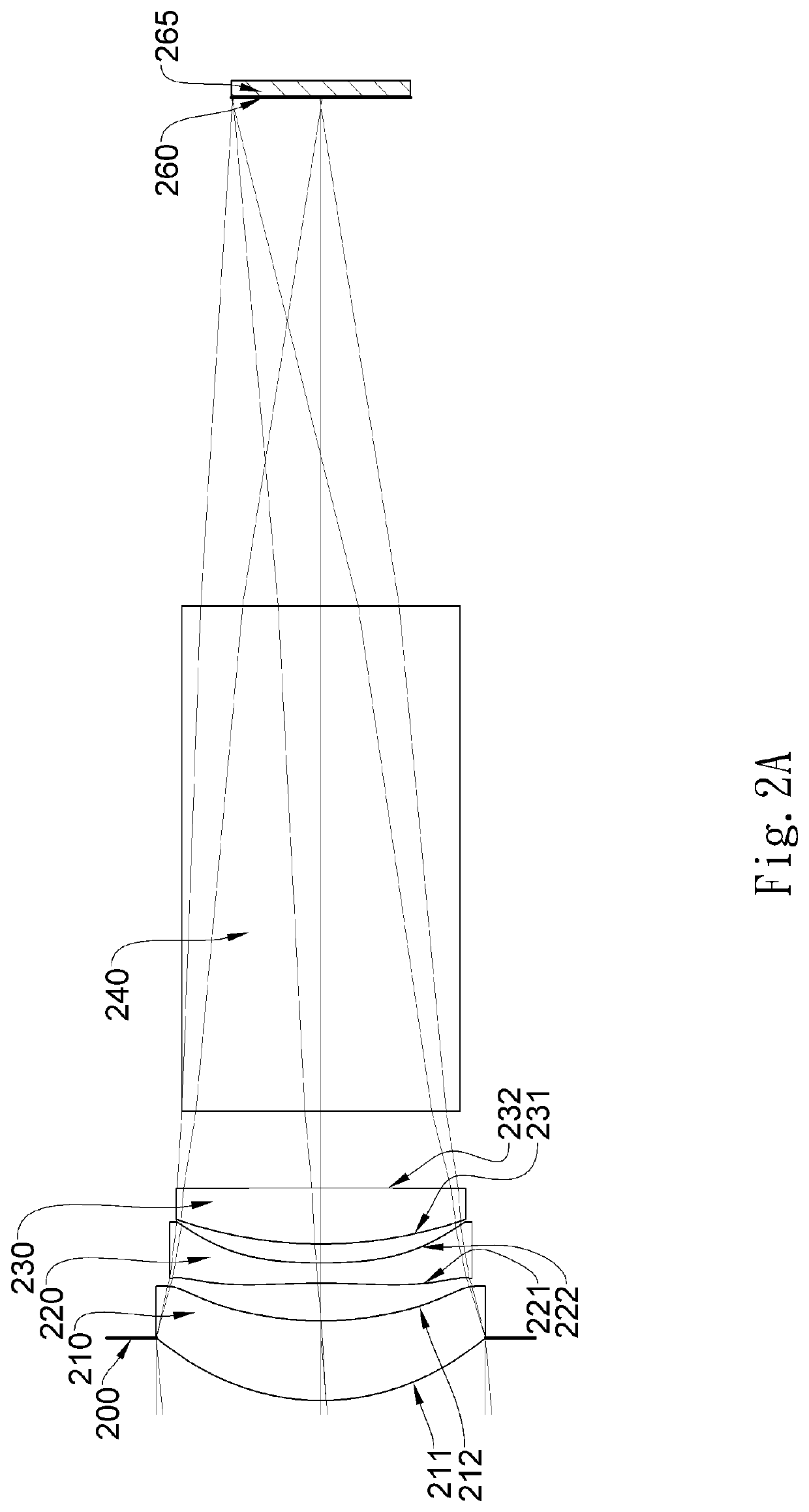Imaging optical system, imaging apparatus and electronic device
an optical system and imaging technology, applied in the field of imaging optical systems and imaging apparatuses, can solve problems such as difficulty in balancing requirements of conventional imaging optical systems
- Summary
- Abstract
- Description
- Claims
- Application Information
AI Technical Summary
Benefits of technology
Problems solved by technology
Method used
Image
Examples
1st embodiment
[0113]FIG. 1A is a schematic view of an imaging apparatus according to the 1st embodiment of the present disclosure. FIG. 1B shows, in order from left to right, longitudinal spherical aberration curves, astigmatic field curves and a distortion curve of the imaging apparatus according to the 1st embodiment.
[0114]In FIG. 1A, the imaging apparatus includes an imaging optical system (not otherwise herein labeled) of the present disclosure and an image sensor 165. The imaging optical system includes, in order from an object side to an image side, a first lens element 110, a second lens element 120, a third lens element 130, an aperture stop 100, a prism 140, a filter 150, and an image surface 160. There is no additional lens element inserted between the first lens element 110 and the third lens element 130 and there are air gaps between paraxial regions of the first lens element 110, the second lens element 120 and the third lens element 130.
[0115]The first lens element 110 with positive...
2nd embodiment
[0155]FIG. 2A is a schematic view of an imaging apparatus according to the 2nd embodiment of the present disclosure. FIG. 2B shows, in order from left to right, longitudinal spherical aberration curves, astigmatic field curves and a distortion curve of the imaging apparatus according to the 2nd embodiment.
[0156]In FIG. 2A, the imaging apparatus includes an imaging optical system (not otherwise herein labeled) of the present disclosure and an image sensor 265. The imaging optical system includes, in order from an object side to an image side, an aperture stop 200, a first lens element 210, a second lens element 220, a third lens element 230, a prism 240, and an image surface 260. There is no additional lens element inserted between the first lens element 210 and the third lens element 230 and there are air gaps between paraxial regions of the first lens element 210, the second lens element 220 and the third lens element 230.
[0157]The first lens element 210 with positive refractive po...
3rd embodiment
[0167]FIG. 3A is a schematic view of an imaging apparatus according to the 3rd embodiment of the present disclosure. FIG. 3B shows, in order from left to right, longitudinal spherical aberration curves, astigmatic field curves and a distortion curve of the imaging apparatus according to the 3rd embodiment.
[0168]In FIG. 3A, the imaging apparatus includes an imaging optical system (not otherwise herein labeled) of the present disclosure and an image sensor 365. The imaging optical system includes, in order from an object side to an image side, a first lens element 310, a second lens element 320, a third lens element 330, an aperture stop 300, a prism 340, a filter 350, and an image surface 360. There is no additional lens element inserted between the first lens element 310 and the third lens element 330 and there are air gaps between paraxial regions of the first lens element 310, the second lens element 320 and the third lens element 330.
[0169]The first lens element 310 with positive...
PUM
 Login to View More
Login to View More Abstract
Description
Claims
Application Information
 Login to View More
Login to View More - R&D
- Intellectual Property
- Life Sciences
- Materials
- Tech Scout
- Unparalleled Data Quality
- Higher Quality Content
- 60% Fewer Hallucinations
Browse by: Latest US Patents, China's latest patents, Technical Efficacy Thesaurus, Application Domain, Technology Topic, Popular Technical Reports.
© 2025 PatSnap. All rights reserved.Legal|Privacy policy|Modern Slavery Act Transparency Statement|Sitemap|About US| Contact US: help@patsnap.com



